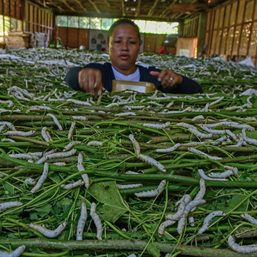SUMMARY
This is AI generated summarization, which may have errors. For context, always refer to the full article.
As the poor lose their jobs amid the coronavirus pandemic, they are also being crushed by rising prices of goods.
Data from the Philippine Statistics Authority (PSA) showed that inflation for the bottom 30% households have been higher than the country’s headline inflation since the lockdowns started in March.
In October, inflation for the poorest income households stood at 2.9%, while headline inflation inched up to 2.5%.
The PSA calculates inflation for poor households by putting more weight on items that the poor usually buy.
Headline inflation is a broader measure across various income groups.
Zooming into figures in the National Capital Region, poor households felt the inflation rate reach 3.7%, as food and transportation costs rose.
Headline inflation is still well within the government’s target band of 1.75% to 2.75%. However, inflation observed in poor households has already breached that range.
The National Economic and Development Authority on Thursday, November 5, said the target band is at 2% to 4%, but news reports in August stated that the range was tightened to 1.75% to 2.75%. Rappler has reached out for clarification and will update the story as soon as new information is available.
Food prices in Manila rose, with meat soaring 16.3%. Fish and rice prices also went up, while vegetable prices started to show signs of increases.
Manila and nearby areas in Luzon are currently experiencing higher pork prices, as the pandemic, as well as African swine fever, affected supply.
Pork prices have soared by almost 70% since January and pork now costs as much as beef, data from the Department of Agriculture showed.
NEDA Acting Secretary Karl Chua noted that weather disturbances affected prices.
“Aside from the ongoing pandemic, the country has been facing adverse weather conditions in the recent months. Effects of typhoons and La Niña on the agriculture sector and food prices pose upside risks to inflation,” Chua said.
Meanwhile, transportation costs have also soared significantly in Metro Manila since the pandemic.
Transportation inflation skyrocketed to 23% in Metro Manila, while it reached over 16% in areas outside the capital region.
The PSA reported that tricycle fares soared by a whopping 45.8% in October, while jeepney and bus fares rose by 6.4% and 4.1%, respectively.
Rent paid by poor households also started to climb in Metro Manila.
Rent went up 3.1% in October from just 1.7% in January.
However, poor income households in areas outside the capital region reported a slowdown in rental rates paid since January.
– Rappler.com
Add a comment
How does this make you feel?

![[Rappler’s Best] US does propaganda? Of course.](https://www.rappler.com/tachyon/2024/06/US-does-propaganda-Of-course-june-17-2024.jpg?resize=257%2C257&crop=236px%2C0px%2C720px%2C720px)





![[WATCH] In the Public Square with John Nery: Abolish the National Housing Authority?](https://www.rappler.com/tachyon/2024/03/In-the-Public-Square-LS.jpg?resize=257%2C257&crop=377px%2C0px%2C1080px%2C1080px)


There are no comments yet. Add your comment to start the conversation.